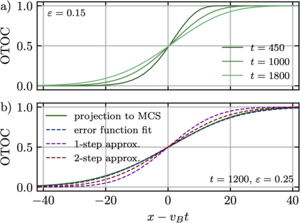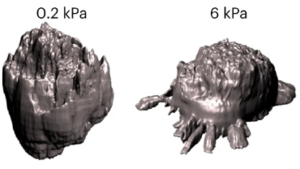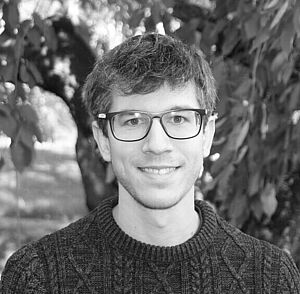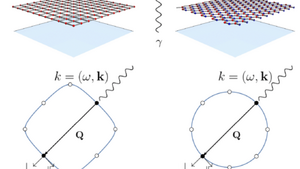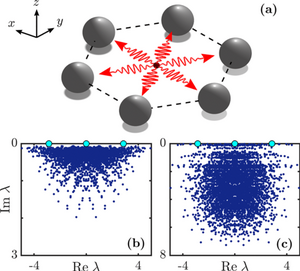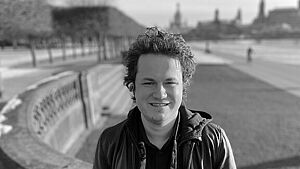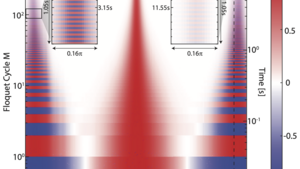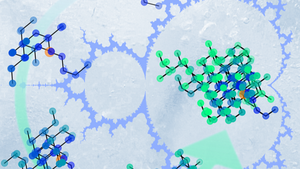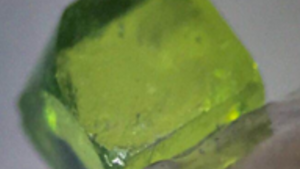
Highlights
Publication Highlights
From Dual Unitarity to Generic Quantum Operator Spreading
Chaotic quantum many-body systems hide information non-locally in many degrees of freedom via a dynamical process called scrambling. Understanding the capacity of quantum systems to scramble information is a crucial requirement for the design and control of quantum computing platforms as well as being intimately related to questions of thermalisation and quantum chaos.
In recent years, dual-unitary circuits have emerged as minimal models for quantum many-body dynamics in which the dynamics are chaotic yet analytically tractable. However, despite their chaoticity these circuits display behaviour that is in many respects non-generic. Michael Rampp, Roderich Moessner, and Pieter Claeys from the Max Planck Institute for the Physics of Complex Systems have investigated the effect of weakly broken dual-unitarity on the spreading of local operators, a particular probe of information scrambling. They recover two universal features of ergodic quantum spin chains absent in dual-unitary circuit dynamics: a butterfly velocity smaller than the light-cone velocity and a diffusively broadening operator front. They present a physical picture for these effects through a discrete path-integral formalism, allowing for a quantitative connection between the microscopic properties of these gates and the macroscopic butterfly velocity and diffusion constant.
M. A. Rampp, R. Moessner, P. W. Claeys, Phys. Rev. Lett. 130, 130402 (2023).
Read moreM. A. Rampp, R. Moessner, P. W. Claeys, Phys. Rev. Lett. 130, 130402 (2023).
Awards and Honors
IUPAP Medal for Frank Jülicher
Frank Jülicher shares the inaugural 2023 IUPAP Medal for the Physics of Life
The International Union of Pure and Applied Physics (IUPAP) has awarded the 2023 IUPAP Medal for the Physics of Life jointly to John J. Hopfield and to Frank Jülicher, director at the Max Planck Institute for the Physics of Complex Systems. The citation reads “For his key contributions to biological active matter physics, shedding light on the physical mechanisms that underlie cellular processes, including cooperative molecular motors; hearing; flagellar beat; active gels, fluids, and droplets; the active cell cortex; tissue growth and patterning; protein phase separation in cells; and self-organization of active surfaces.”
The IUPAP Medal for the Physics of Life is a new award of the International Union for Pure and Applied Physics (IUPAP), presented by its C6 Commission on Biological Physics every three years, at the IUPAP International Conference on Biological Physics (ICBP). The Award, consisting of a gilded medal and a certificate, recognizes outstanding achievements in Biological Physics, regardless of the country where the research has been done, the age, or the employment status of the nominee.
Congratulations, Frank!
Read moreThe International Union of Pure and Applied Physics (IUPAP) has awarded the 2023 IUPAP Medal for the Physics of Life jointly to John J. Hopfield and to Frank Jülicher, director at the Max Planck Institute for the Physics of Complex Systems. The citation reads “For his key contributions to biological active matter physics, shedding light on the physical mechanisms that underlie cellular processes, including cooperative molecular motors; hearing; flagellar beat; active gels, fluids, and droplets; the active cell cortex; tissue growth and patterning; protein phase separation in cells; and self-organization of active surfaces.”
The IUPAP Medal for the Physics of Life is a new award of the International Union for Pure and Applied Physics (IUPAP), presented by its C6 Commission on Biological Physics every three years, at the IUPAP International Conference on Biological Physics (ICBP). The Award, consisting of a gilded medal and a certificate, recognizes outstanding achievements in Biological Physics, regardless of the country where the research has been done, the age, or the employment status of the nominee.
Congratulations, Frank!
Publication Highlights
Cancer cells move to stiff environments as living droplets
Recent work by Ricard Alert of the Max Planck Institute for the Physics of Complex Systems and his collaborators uncovered a similarity between liquid droplets and cell groups, revealing that surface tension helps cells to migrate towards stiffer environments. The new work proposes that this process, called durotaxis and which was defined in the field of cell biology, can be accounted for quite precisely with the physics of wetting. This new insight could help us to understand how cancer cells disseminate across tissues with different rigidity in our body.
M. E. Pallarès*, I. Pi-Jaumà*, I. C. Fortunato, V. Grazu, M. Gómez-González, P. Roca-Cusachs, J. M. de la Fuente, R. Alert, R. Sunyer, J. Casademunt, and X. Trepat. Nat. Phys. 19, 279 (2023).
Read moreM. E. Pallarès*, I. Pi-Jaumà*, I. C. Fortunato, V. Grazu, M. Gómez-González, P. Roca-Cusachs, J. M. de la Fuente, R. Alert, R. Sunyer, J. Casademunt, and X. Trepat. Nat. Phys. 19, 279 (2023).
Awards and Honors
IUPAP Early Career Prize for Ricard Alert
Ricard Alert receives the IUPAP Early Career Scientist Prize in Biological Physics (C6) 2023
The International Union of Pure and Applied Physics (IUPAP) has awarded the 2023 Early Career Prize 2023 in Biological Physics to Ricard Alert, research group leader at the Max Planck Institute for the Physics of Complex Systems and the Center for Systems Biology Dresden for "revealing how new phenomena in active matter underlie a wide range of biological processes, from the spreading of epithelial tissues, to turbulent-like flows in cytoskeletal networks, to the formation of fruiting bodies in bacterial colonies".
The IUPAP C6 Early Career Scientist Prize recognizes exceptional achievements of scientists in the field of Biological Physics at a relatively early stage of their career. The recipients must be no more than eight years past the award of their PhDs (excluding career interruptions), and they are expected to have demonstrated significant scientific achievements and display exceptional promise for future achievements in Biological Physics.
Congratulations, Ricard!
Read moreThe International Union of Pure and Applied Physics (IUPAP) has awarded the 2023 Early Career Prize 2023 in Biological Physics to Ricard Alert, research group leader at the Max Planck Institute for the Physics of Complex Systems and the Center for Systems Biology Dresden for "revealing how new phenomena in active matter underlie a wide range of biological processes, from the spreading of epithelial tissues, to turbulent-like flows in cytoskeletal networks, to the formation of fruiting bodies in bacterial colonies".
The IUPAP C6 Early Career Scientist Prize recognizes exceptional achievements of scientists in the field of Biological Physics at a relatively early stage of their career. The recipients must be no more than eight years past the award of their PhDs (excluding career interruptions), and they are expected to have demonstrated significant scientific achievements and display exceptional promise for future achievements in Biological Physics.
Congratulations, Ricard!
Publication Highlights
Non-Fermi-Liquid Behavior from Cavity Electromagnetic Vacuum Fluctuations
In a number of different behaviour, so-called non-Fermi-liquid behaviour appears due to strong correlations between electrons. The standard theoretical scenario relies on emergent collective bosonic modes with strong critical fluctuations that destroy the electronic quasiparticles. Due to the complexity of the actual material, it is difficult to determine the microscopic origin of the relevant bosonic modes systematically. Peng Rao and Francesco Piazza of the Max Planck institute for the Physics of Complex Systems have now shown that cavity quantum electrodynamics within two-dimensional materials is ideal to implement non-Fermi-liquid behaviour. The emergent bosonic modes belong here to the vacuum electromagnetic field, a microscopic degree of freedom of which the dynamics and coupling with electrons can be controlled by cavity engineering.
P. Rao and F. Piazza, Phys. Rev. Lett. 130, 083603 (2023)
Read moreP. Rao and F. Piazza, Phys. Rev. Lett. 130, 083603 (2023)
Publication Highlights
Symmetry-induced decoherence-free subspaces
Preservation of coherence is a fundamental, yet subtle, phenomenon in open systems. We uncover its relation to symmetries respected by the system Hamiltonian and its coupling to the environment. We discriminate between local and global classes of decoherence-free subspaces for many-body systems through the introduction of “ghost variables”. The latter are orthogonal to the symmetry and the coupling to the environment depends solely on them. Constructing them is facilitated in classical phase space and can be transferred to quantum mechanics through the equivalent role that Poisson and Lie algebras play for symmetries in classical and quantum mechanics, respectively. Examples are given for an interacting spin system.
J. Dubois, U.Saalmann, and J.M. Rost, Phys. Rev. Research 5, L012003 (2023)
Read moreJ. Dubois, U.Saalmann, and J.M. Rost, Phys. Rev. Research 5, L012003 (2023)
Institute's News
New Research Group: Superconductivity and Magnetic Correlations
We cordially welcome the arrival of our new group at the institute, headed by Alexander Wietek, who joins us from the Flatiron Institute. Alex's group is interested in the way quantum particles, like electrons or atoms, organize themselves while interacting with one another. This way, Alex and his colleagues aim at understanding how the macroscopic behavior of materials, like various forms of magnetism or superconductivity, emerges. Besides trying to explain existing experimental phenomena in solid-state physics, they investigate under which circumstances entirely new states of matter, like quantum spin liquids, can occur.
To solve these questions, the new group is developing numerical technology to simulate quantum many-body systems. The quantum many-body problem is considered to be exponentially hard in the number of particles. One approach Alex is pursuing is to push the limits of exact simulations by developing high-performance computing software and distributed parallel algorithms for quantum many-body systems. Furthermore, the team is also embracing tensor network methods to reduce computational complexity by representing data efficiently.
Welcome at MPI-PKS!!
Read morePublication Highlights
Discrete time crystal created by two-frequency external driving
Time crystals are a freshly discovered nonequilibrium phase of matter without an equilibrium counterpart, stabilized by external periodic drives and characterized by broken spatiotemporal symmetry. Scientists from the Nonequilibrium Quantum Dynamics group at the Max Planck Institute for the Physics of Complex Systems, together with collaborators at the KTH Royal Institute of Technology and at UC Berkeley, created a critical time crystal in a system of long-range interacting nuclear spins. Designing a novel two-frequency external driving protocol allowed the scientists to monitor the time-crystalline behavior continuously (avoiding the wave function collapse), and take real-time movies displaying the formation, lifetime, and meltdown of this exotic phase of matter. The experimental platform used offers unprecedented clarity and measurement throughput, which turned out fundamental for determining the boundaries of the time-crystalline phase, and investigating in detail the melting dynamics of the time crystal as it gradually heats up.
W. Beatrez et al., Nat. Phys. 19, 407 (2023)
Read moreW. Beatrez et al., Nat. Phys. 19, 407 (2023)
Publication Highlights
Dynamical fractal discovered in clean magnetic crystal
A new type of fractal has been discovered in a class of materials called spin ices—famous, among other reasons, for their emergent magnetic monopole excitations. Spin ice materials are some of the most researched and best understood topological magnets. Nevertheless, the unusual dynamical properties of spin ice have been puzzling scientists for almost two decades. An international research team, including Jonathan N. Hallén and Roderich Moessner of the Max Planck Institute for the Physics of Complex Systems, has now shown that the dynamical rules governing the motion of the magnetic monopoles constrain these to move on fractal structures. By hosting the monopole motion, the fractals cause the peculiar dynamical behaviours observed in spin ice materials.
The discovery was surprising because the fractals were seen in a clean three-dimensional crystal, where they would not be expected conventionally. Even more remarkably, the fractals are visible in dynamical properties of the crystal, and hidden in static ones. The capacity of spin ice to exhibit such striking phenomena makes the team hopeful that spin ice will allow further surprising discoveries in the cooperative dynamics of even simple topological many-body systems. More details can be found in a press release (PDF).
J. N. Hallén et al., Science 378, 1218 (2022)
See also the related Science Perspective article by F. Flicker.
Read moreThe discovery was surprising because the fractals were seen in a clean three-dimensional crystal, where they would not be expected conventionally. Even more remarkably, the fractals are visible in dynamical properties of the crystal, and hidden in static ones. The capacity of spin ice to exhibit such striking phenomena makes the team hopeful that spin ice will allow further surprising discoveries in the cooperative dynamics of even simple topological many-body systems. More details can be found in a press release (PDF).
J. N. Hallén et al., Science 378, 1218 (2022)
See also the related Science Perspective article by F. Flicker.
Publication Highlights
Recipe for a spin-orbital liquid
An international team of scientists including Roderich Moessner of the Max Planck Institute for the Physics of Complex Systems has observed an exotic quantum state of matter: a spin-orbital liquid formed on the pyrochlore oxide Pr2Zr2O7. Here, both spin and orbital degrees of freedom remain dynamic down to extremely low temperature. It is known from the long history of condensed matter physics that suppressing orbital order down to low temperatures is extremely difficult, a precondition for the next tricky step of obtaining a spin-orbital liquid state. Pr2Zr2O7 serves as a rare counterexample in which spins and orbitals are interlocked, so that fluctuation of one necessitates fluctuation of the other. More details can be found in a press release (PDF).
N. Tang, Y. Grisenko, K. Kimura et al., Nat. Phys. (2022)
See also the related Nat. Phys. News & Views article by V. S. Zapf, M. Lee, and P. F. S. Rosa.
Read moreN. Tang, Y. Grisenko, K. Kimura et al., Nat. Phys. (2022)
See also the related Nat. Phys. News & Views article by V. S. Zapf, M. Lee, and P. F. S. Rosa.

